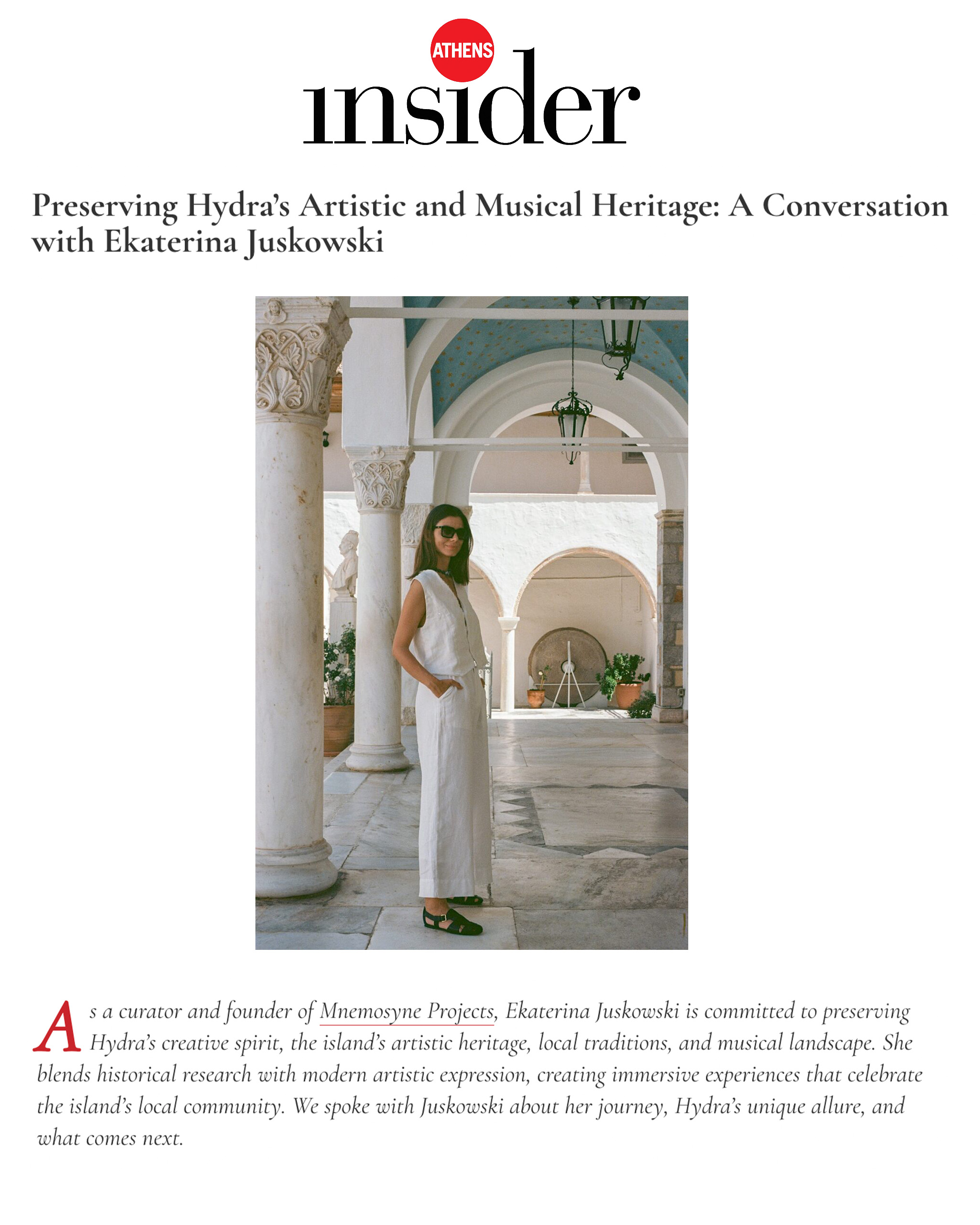Preserving Hydra’s Artistic and Musical Heritage: Athens Insider talks to curator Ekaterina Juskowski about Hydra: Island in the Sound project and Hydra Art Residency by Mnemosyne Projects.

When did your romance with Hydra begin?
During a twenty-four-hour music performance for the goats. We gathered in Episkopi, a beautiful remote part of Hydra. Picture this: a Bauhaus villa perched atop the island, no electricity, no Wi-Fi, no mobile reception, just a star-strewn sky, the sounds of cicadas and goat bells in the olive groves. Then Gorkem Sen creates some cosmic reverberations with his yaybahar, the late Ariel Kalma plays flutes, didgeridoo, and saxophone. I was among an international group of artists, musicians, and writers with no agenda beyond pure, unfiltered creation. It was one of those surreal experiences that I believe can only happen on Hydra and make you fall in love with the island.
Since 2019, you've been leading an art residency program at the Old Carpet Factory on Hydra. What inspired this project?
The island’s breathtaking landscapes, rich cultural lineage, and deeply connected community of artists and intellectuals foster an atmosphere like no other. But there is also a quiet struggle, the slow erosion of local traditions, and the fading of Hydra’s unique cultural practices. I wanted to use art as a vessel for preservation, ensuring that Hydra’s true identity remains celebrated, not forgotten.
The Warp of Time exhibition last year explored Hydra’s history and artisanal heritage. Tell us about that journey.
The exhibition was the culmination of three years of immersive research into Hydra’s history, with a particular focus on the Old Carpet Factory mansion. The house is an architectural time capsule deeply connected to the island’s history. It served as a carpet-making facility under the Soutzoglou family over a century ago and contributed to the island’s artisanal, cultural, but also played an important economical part in providing jobs for women. Central to The Warp of Time exhibition was an exquisite antique carpet, woven in the very house in 1924, it was presented alongside the works of Helen Marden, an artist whose deep connection to Hydra has shaped her artistic vision since the 1970s. The exhibition was a celebration, a bridge between generations, and a reminder of the community sustained through the art of weaving. If you're curious to dive deeper, The Warp of Time book is the perfect way to learn about the project.
